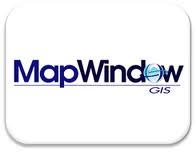

GIS is an exciting world of information and graphics combined, which is used to represent real situations. To enable the GIS enthusiast or University Students to get started, this series i will be covering the the basics.
A good overview of GIS systems is presented here Wikipedia Geographic Information Systems. Have a read of this, in the next post i will discuss the following facets of GIS systems
- Hardware Selection
- GIS Software
- GIS Database
- GIS Servers
 |
| Basic Shape file |
Many sources of good information and data abounds for GIS on the internet. Just search on Google for GIS and see how many referenced pages the engine displays.
Hardware
I am currently using an laptop - Intel core I3 with 2.27 GHz speed and 4 GB of RAM. This is suitable for working, even with small to medium DEM files and performing Hydrology Analysis functions which can be found in FOSS Applications like SAGA. The more processing power means finishing the tasks quicker, it is really up to the individual, and whether they have the dollars to buy a high powered machine for GIS crunching. Unless you are dealing with large DEM maps at high resolution, the specs i have referenced above is suitable for a weekend GIS enthusiast.
Software
There is two kinds of Software which have been developed for working with GIS information. Open Source Collaborative Systems and Commercial GIS Systems. Wiki provides a good listing of systems which are currently available.

No comments:
Post a Comment
Please leave comments or questions you may have relating to the GIS World. I'll do my best to reply as time allows.